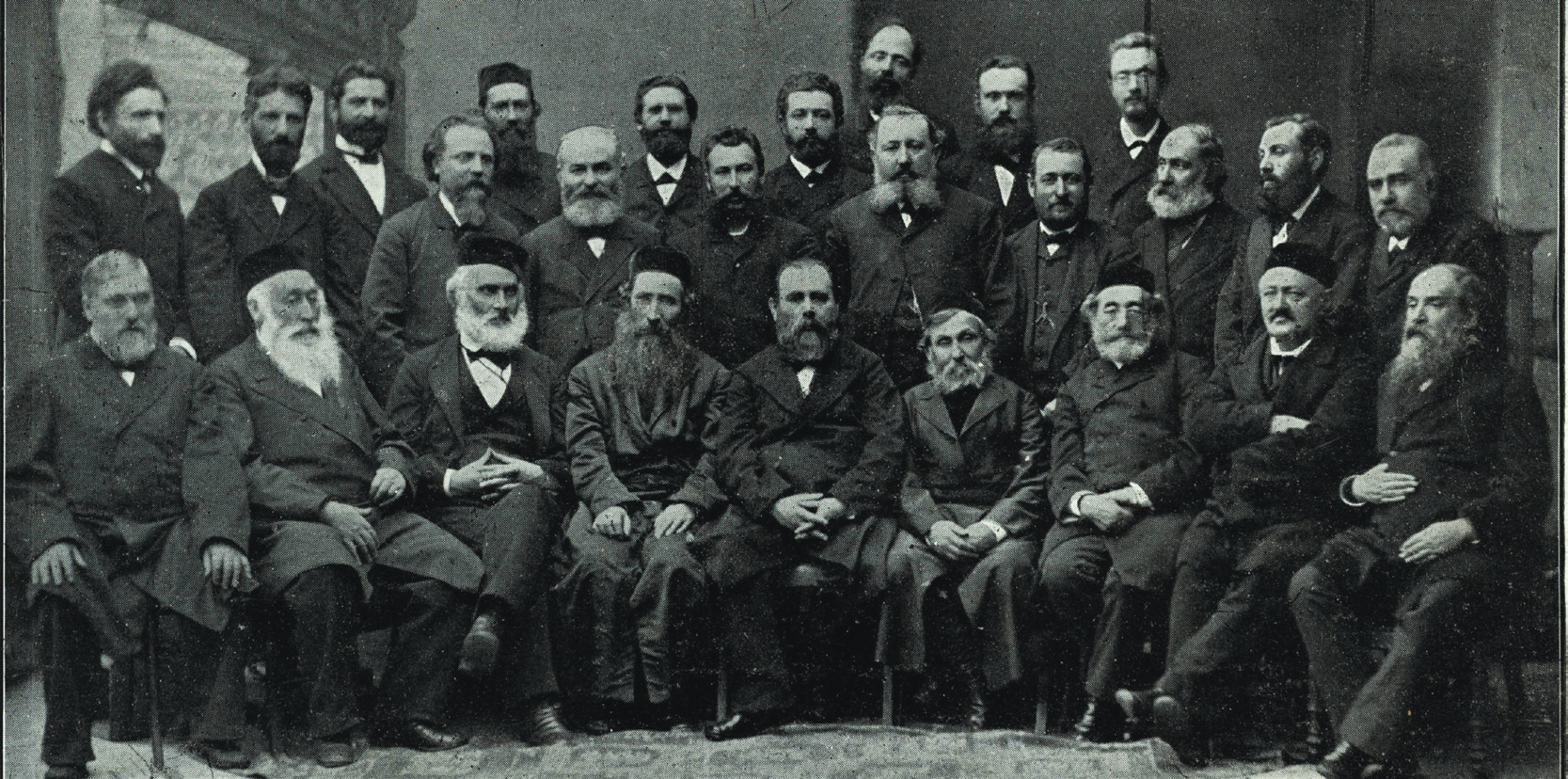Eastern European Locals Pave the Way for Herzl
The Russian pogroms of 1881–2 and growing European anti-Semitism precipitated vast Jewish emigration from eastern Europe, mostly to the U.S. and western Europe. A tiny minority headed instead for a life of toil in the land of Israel, in what is still described – despite its insignificant proportions – as the First Aliya. This development triggered several conferences aiming to bolster the ranks and articulate the aims of Zionist immigration as well as to raise money for the movement.
One such precursor of the Zionist congresses took place in January 1882 in Focsani, Romania. Increasingly widespread Romanian anti-Semitism had heightened interest in immigration to Palestine, so Samuel Pinles singlehandedly organized the gathering, limited to local Jews and a few foreign guests. The congress made headlines among Jews around the world.
Even more famous was the Katowice Conference, the first major assembly organized by the Hibbat Tzion movement. Held in 1884 in Silesia, then part of Germany, this “Great Jewish Parliament,” as Zionist activist Nahum Sokolov termed it, remains a milestone in the annals of Zionism. Among those in attendance were Rabbi Samuel Mohliver, Judah Leib Pinsker, and Moses Leib Lilienblum.
Both conferences were in point of fact tiny. Fifty-one delegates attended the first, and only thirty-five graced the second. Though they may have set precedents, these assemblies pale into insignificance in comparison with Herzl’s efforts and the success of his First Zionist Congress.

